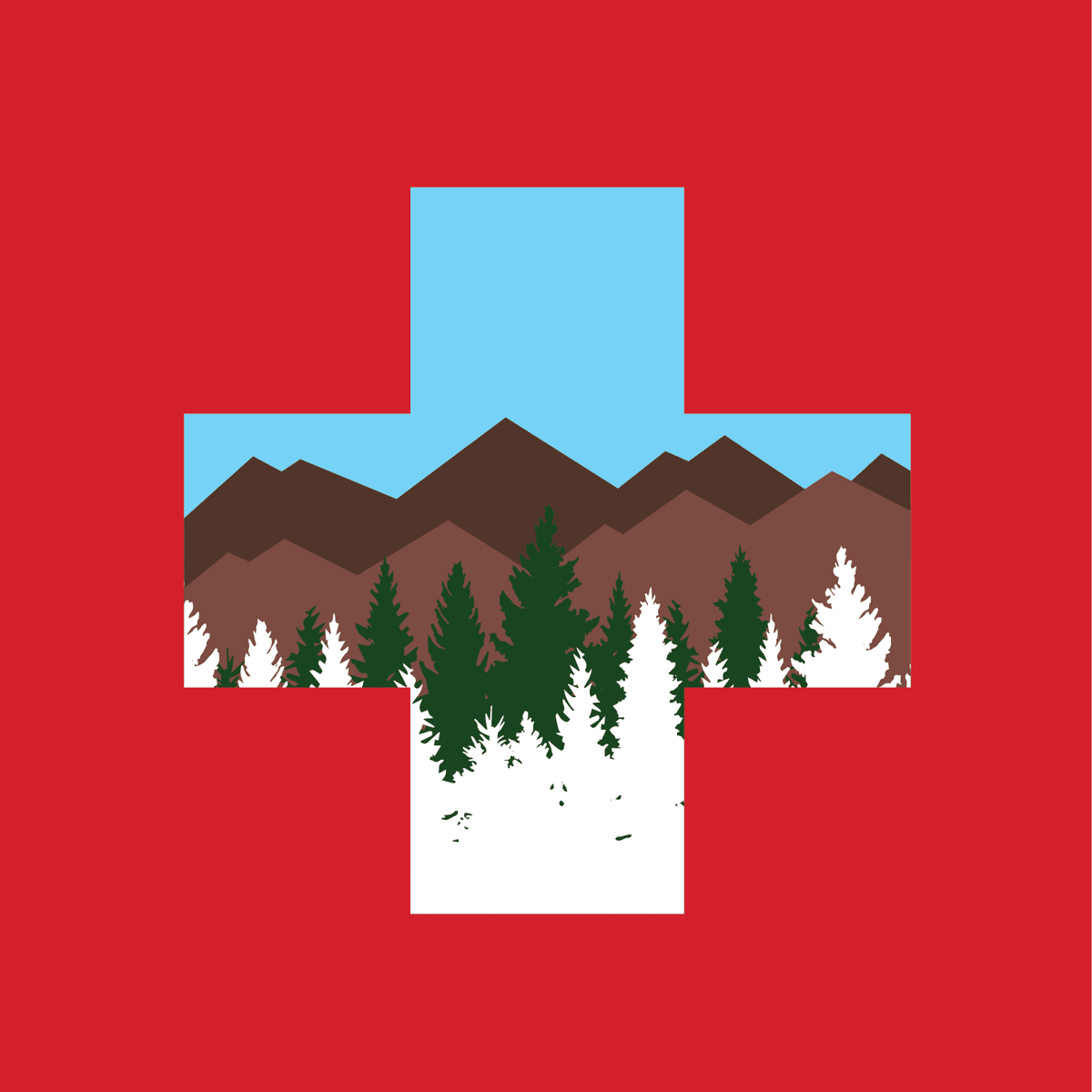Firefighter
Becoming a Firefighter: A Comprehensive Career Guide
Firefighters are essential emergency responders trained primarily to extinguish hazardous fires that threaten life, property, and the environment. They are highly skilled professionals who operate in high-stakes situations, often requiring significant physical strength, endurance, and mental fortitude. Their role extends far beyond battling blames, encompassing a wide array of emergency response and community safety activities.
Working as a firefighter offers a unique blend of challenges and rewards. It involves the adrenaline rush of emergency calls, the satisfaction of helping people in distress, and the camaraderie built within a close-knit team. This career path demands dedication, continuous learning, and a deep commitment to public service, making it a respected and vital profession in any community.
Introduction to Firefighting as a Career
What is a Firefighter?
At its core, a firefighter is a rescuer extensively trained in firefighting. They confront dangerous situations involving fire, smoke, and structural instability to save lives and protect property. Their primary purpose involves controlling and extinguishing fires, but the scope of their duties is much broader, reflecting the complex safety needs of modern society.
Firefighters respond to a vast range of emergencies beyond fires. These include medical calls, vehicle accidents, hazardous materials incidents, water rescues, and specialized technical rescues. They are often the first on the scene, providing critical initial care and stabilization in emergencies.
The profession demands a unique combination of skills: physical prowess for demanding tasks, technical knowledge of equipment and procedures, critical thinking for rapid decision-making under pressure, and strong communication skills for teamwork and public interaction. It's a career defined by service, courage, and preparedness.
A Brief History
Organized firefighting dates back to ancient Rome, where Emperor Augustus established the Vigiles Urbani, a corps functioning as both police and firefighters. Throughout history, methods evolved from simple bucket brigades to hand-pumped engines. Benjamin Franklin famously founded the first volunteer fire company in Philadelphia in 1736, laying groundwork for modern fire departments in the United States.
The Industrial Revolution brought steam-powered fire engines, significantly increasing firefighting capabilities. The 20th century saw major advancements in equipment, protective gear, training standards, and the integration of emergency medical services (EMS) into the fire service role. This evolution transformed firefighting from a basic response function into a comprehensive emergency service profession.
Today, firefighting continues to evolve with technology and changing societal needs. Increased understanding of fire dynamics, better building codes, and a focus on prevention have reshaped the field. The integration of data analysis and advanced technology aids in both emergency response and community risk reduction.
For those interested in the broader context of safety and prevention in community settings, understanding historical and innovative approaches can be beneficial.
More Than Putting Out Fires
While fire suppression remains a critical function, the modern firefighter's role is multifaceted. A significant portion of calls involve providing Emergency Medical Services (EMS). Firefighters are often trained as Emergency Medical Technicians (EMTs) or paramedics, delivering life-saving medical care before patients reach a hospital.
Firefighters also play a crucial role in disaster management and response. They assist during natural disasters like floods, hurricanes, and earthquakes, performing search and rescue operations and providing logistical support. Their training prepares them to operate effectively within coordinated interagency efforts during large-scale emergencies.
Beyond emergency response, firefighters engage actively in community risk reduction. This includes conducting building inspections, enforcing fire codes, installing smoke alarms, and delivering public education programs on fire safety and prevention. They are visible community figures promoting safety awareness.
Key Responsibilities and Daily Duties
Responding to Emergencies: Fire Suppression
When a fire alarm sounds, firefighters respond rapidly, equipped with specialized gear and vehicles. On scene, they assess the situation, establish water supplies, deploy hoses, and attack the fire using specific techniques tailored to the type and scale of the blaze. This involves understanding fire behavior, ventilation tactics, and structural integrity.
Fire suppression requires intense teamwork and coordination. Incident commanders direct operations, while crews perform tasks like forcible entry, search and rescue for trapped occupants, and containing the fire's spread. Safety protocols are paramount to protect both civilians and the firefighters themselves in these inherently dangerous environments.
Effective fire suppression relies on continuous training and familiarity with diverse scenarios, from residential fires to complex industrial incidents. Mastery of tools, equipment, and strategic decision-making under pressure is essential for successful outcomes.
Emergency Medical Response
Emergency Medical Services (EMS) constitute a large percentage of a firefighter's calls. Many fire departments require firefighters to be certified EMTs, with some achieving paramedic-level certification. They respond to medical emergencies like heart attacks, strokes, trauma from accidents, and breathing difficulties.
On scene, firefighters provide immediate medical assessment and interventions, such as administering oxygen, performing CPR, controlling bleeding, and stabilizing injuries. Their quick response and initial care can significantly impact patient survival and recovery rates, bridging the gap until ambulance transport or advanced medical personnel arrive.
The integration of EMS duties requires firefighters to possess strong medical knowledge, patient assessment skills, and compassion. Continuous medical training ensures they remain proficient in the latest protocols and treatments.
These courses provide foundational knowledge and skills crucial for emergency medical response.
Staying Prepared: Training and Maintenance
A significant portion of a firefighter's time is spent on training and preparation when not responding to calls. Regular drills simulate various emergency scenarios, including fire attacks, rescues, EMS protocols, and hazardous materials incidents. This constant practice hones skills and ensures crew cohesion.
Physical fitness is crucial. Firefighters must maintain high levels of strength, stamina, and agility to perform demanding tasks while wearing heavy gear. Many departments incorporate mandatory fitness programs and assessments into daily routines.
Equipment readiness is vital. Firefighters meticulously inspect, clean, and maintain their tools, apparatus (fire engines, ladders trucks), and personal protective equipment (PPE). Ensuring everything is in perfect working order is critical for safety and operational effectiveness during emergencies.
Preventing Fires: Community Risk Reduction
Modern firefighting emphasizes prevention as much as response. Firefighters actively participate in community risk reduction (CRR) programs aimed at minimizing the likelihood and impact of fires and other emergencies. This proactive approach helps build safer communities.
Activities include conducting fire safety inspections in businesses and public buildings to ensure compliance with fire codes. They also engage in public education, visiting schools and community events to teach fire safety, demonstrate smoke alarm usage, and offer home safety tips.
Some firefighters specialize in fire prevention, focusing on code enforcement, public education strategy, and fire cause investigation. These roles contribute significantly to reducing fire incidents and losses within the community.
Education and Certification Pathways
Laying the Foundation: High School and Beyond
Aspiring firefighters should focus on a solid high school education, emphasizing subjects like math, chemistry, and physics, which provide a foundation for understanding fire science and hydraulics. Strong communication skills, both written and verbal, are also essential. Participation in team sports or physically demanding activities helps build the necessary fitness and teamwork abilities.
While not always mandatory, some post-secondary education, such as courses in fire science or emergency medical services, can be advantageous. A clean driving record and background check are typically required. Early engagement through volunteer firefighting or cadet programs can provide valuable experience and insight into the profession.
Physical fitness is non-negotiable. Prospective candidates should begin developing strength, cardiovascular endurance, and agility well before applying, as physical ability tests are rigorous.
Formal Training: Fire Academy and EMT Certification
Most career firefighters must graduate from a certified fire academy. Academies provide intensive training covering firefighting techniques, equipment operation, hazardous materials response, rescue procedures, and physical conditioning. The curriculum combines classroom instruction with extensive hands-on drills.
Emergency Medical Technician (EMT) certification is typically a minimum requirement for employment. This involves completing an accredited EMT course and passing state or national certification exams. Some departments require paramedic certification, which involves more advanced medical training.
These foundational books are essential reading for anyone involved in emergency care.
Passing the fire academy and obtaining EMT certification are critical milestones on the path to becoming a firefighter.
Academic Advancement: Degrees in Fire Science
While a high school diploma or GED combined with academy training and EMT certification often meets minimum requirements, pursuing higher education can offer significant advantages. Associate's or Bachelor's degrees in Fire Science, Fire Administration, or Emergency Management provide deeper knowledge of fire behavior, prevention strategies, management principles, and leadership skills.
A degree can enhance competitiveness for entry-level positions and is often necessary for promotion to officer ranks, such as Lieutenant, Captain, or Chief. Academic programs cover topics like fire dynamics, building construction, fire codes, hazardous materials management, and public administration.
Online courses offer flexible pathways for firefighters seeking to advance their education while working. Platforms like OpenCourser provide access to relevant coursework in areas like public safety, management, and technical skills, allowing individuals to tailor their learning to career goals.
Continuous Learning: Professional Certifications
Firefighting demands lifelong learning. Beyond initial training, firefighters pursue ongoing professional development and specialized certifications to enhance their skills and advance their careers. Requirements vary by department, but continuous education is standard.
Specialized certifications can include areas like Hazardous Materials Technician (Hazmat), Technical Rescue (e.g., confined space, swift water, high-angle rescue), Fire Investigator, Fire Inspector, Driver/Operator (Engineer), and various levels of officer training. These certifications often involve rigorous coursework and practical assessments.
Staying current with evolving technologies, tactics, and safety standards is crucial. Professional certifications demonstrate expertise and commitment, opening doors to specialized assignments and leadership roles within the fire service.
These resources cover essential standards and materials knowledge crucial for fire protection professionals.
Physical and Mental Requirements
Meeting the Physical Demands
Firefighting is one of the most physically demanding occupations. Firefighters must be able to perform strenuous tasks under extreme conditions, often while wearing heavy protective gear weighing 50 pounds or more. Tasks include carrying heavy equipment, raising ladders, forcible entry, dragging hoses, and rescuing victims.
Most departments require candidates to pass a rigorous physical ability test, commonly the Candidate Physical Ability Test (CPAT). The CPAT simulates job tasks like stair climbs, hose drags, equipment carries, ladder raises, forcible entry simulation, search, rescue drag, and ceiling breach/pull. Maintaining peak physical condition throughout one's career is essential for job performance and injury prevention.
Consistent strength training, cardiovascular conditioning, and flexibility exercises are vital. Departments often provide fitness facilities and may mandate regular fitness assessments to ensure personnel maintain the required physical standards.
This course offers structured training to improve a key component of firefighter fitness.
Handling High-Stress Situations
Firefighters routinely face traumatic events, life-threatening situations, and high-stress environments. The ability to remain calm, think clearly, and make critical decisions under intense pressure is paramount. Mental resilience is as crucial as physical strength.
Training includes developing stress management techniques and understanding the psychological impacts of the job. Departments increasingly offer resources like peer support programs, counseling services, and mental health awareness training to help firefighters cope with cumulative stress and potential trauma.
Developing coping mechanisms, maintaining strong personal support systems, and utilizing available departmental resources are key to managing the psychological demands of the career.
These courses provide valuable skills for managing stress and providing initial psychological support.
Long-Term Health and Well-being
The demanding nature of firefighting carries long-term health risks. Exposure to smoke, chemicals, and carcinogens increases the risk of certain cancers and respiratory diseases. Physical exertion contributes to higher rates of cardiovascular issues and musculoskeletal injuries.
The psychological toll can also be significant, with elevated risks of Post-Traumatic Stress Disorder (PTSD), anxiety, and depression due to repeated exposure to trauma. Shift work disrupts sleep patterns and can impact overall health and family life.
Awareness, prevention, and support are crucial. This includes using protective gear correctly, undergoing regular health screenings, promoting mental health awareness, and utilizing wellness programs offered by departments. Prioritizing health and well-being is essential for a long and sustainable career.
Understanding mental health challenges is important for first responders.
Career Progression and Promotion Structure
Starting Your Career: Entry-Level Roles
Upon completing the fire academy and obtaining necessary certifications (like EMT), individuals typically begin as probationary firefighters. This period, often lasting 6 to 18 months, involves intensive on-the-job training, close supervision, and evaluation. Probationary firefighters learn departmental procedures, familiarize themselves with their assigned station and response area, and prove their competence.
Entry-level firefighters perform all fundamental duties, including responding to fires and medical calls, maintaining equipment, participating in drills, and engaging in station duties. It's a critical phase for skill development and integration into the crew and department culture.
Successfully completing probation leads to confirmation as a permanent firefighter, marking the official start of a long-term career in the fire service.
Climbing the Ladder: Advancement Opportunities
Fire departments typically have a hierarchical rank structure offering clear paths for promotion. After gaining experience (usually 3-5 years), firefighters may become eligible to test for promotion to roles like Driver/Engineer (responsible for driving and operating fire apparatus).
Further advancement leads to officer ranks, starting with Lieutenant, then Captain, Battalion Chief, and potentially Deputy or Assistant Chief, culminating in the Fire Chief position. Promotions usually involve competitive written exams, interviews, assessment centers, and consideration of experience and performance.
Each rank brings increased responsibilities, including supervising crews, managing incidents, overseeing station operations, and contributing to administrative functions. Higher education, specialized certifications, and demonstrated leadership skills are often prerequisites for advancement.
Leadership and Specialization Paths
Beyond the standard promotional ladder, firefighters can pursue specialized roles based on interest and expertise. Opportunities exist in areas like fire prevention, public education, fire investigation, training, hazardous materials response, technical rescue, and emergency medical services coordination.
Becoming a Training Officer involves developing and delivering training programs for recruits and experienced personnel. Fire Prevention Officers enforce fire codes, conduct inspections, and manage public safety campaigns. Fire Investigators determine the origin and cause of fires, often working closely with law enforcement.
These specialized paths allow firefighters to deepen their expertise in specific domains and contribute to the department's mission in diverse ways, often requiring additional training and certifications.
Beyond the Department: Alternative Career Moves
The skills and experience gained as a firefighter are transferable to various other fields. Some firefighters transition to roles in federal agencies like FEMA or the U.S. Forest Service (especially those with wildland firefighting experience). Others move into industrial safety positions in the private sector, leveraging their knowledge of emergency response and safety protocols.
Opportunities also exist in emergency management, consulting, fire protection engineering, or teaching fire science at colleges or academies. Experience in leadership and administration can open doors to management roles in public safety or related fields.
A firefighting career provides a strong foundation in crisis management, teamwork, and technical skills, creating diverse options for those seeking different challenges later in their careers.
Risks and Occupational Challenges
Navigating On-the-Job Dangers
Firefighting is inherently dangerous. Firefighters face risks from flames, extreme heat, smoke inhalation, structural collapse, exposure to hazardous materials, and potential explosions. Operating in unpredictable and rapidly changing environments requires constant vigilance and adherence to safety procedures.
Beyond fires, responding to traffic accidents, medical emergencies, and rescue situations also presents risks, including exposure to infectious diseases and physical violence. Rigorous training, advanced personal protective equipment (PPE), and strong incident command systems are crucial for mitigating these dangers, but the potential for injury or fatality remains a constant reality.
Understanding and respecting these risks, while relying on training and teamwork, is essential for navigating the challenges of the profession safely.
This course explores the impact of fires beyond the immediate danger.
Financial and Personal Security
The physical risks of firefighting can lead to career-ending injuries. While departments typically offer disability pensions, the financial implications can still be significant. Understanding pension plans, insurance options, and financial planning is important for long-term security.
The demands of shift work, including long hours, overnight shifts, weekends, and holidays, significantly impact work-life balance. Maintaining personal relationships and managing family responsibilities requires careful planning and understanding from loved ones. The emotional toll of witnessing trauma can also strain personal lives if not managed effectively.
Prospective firefighters should consider these financial and personal challenges alongside the rewards of the career.
Environmental Impacts: The Rise of Wildfires
Climate change is contributing to longer and more intense wildfire seasons in many regions, increasing the demand and risks for firefighters, particularly those specializing in wildland firefighting. According to the National Interagency Fire Center, wildfire frequency and severity have shown upward trends in recent decades.
Fighting wildfires involves unique challenges, including working in remote terrain, extended deployments away from home, and exposure to different environmental hazards. The increasing scale of these events places greater physical and mental strain on firefighters and stretches departmental resources.
This evolving environmental challenge underscores the need for adaptability, specialized training, and adequate resources within the fire service to address the growing threat of large-scale wildfires.
Learning about Geographic Information Systems (GIS) can be helpful in analyzing fire patterns.
The Toll of Shift Work
Most firefighters work demanding schedules, often involving 24-hour shifts followed by 48 or 72 hours off, or rotating day/night shifts. While this allows for blocks of free time, it disrupts the body's natural circadian rhythm, leading to sleep deprivation and fatigue.
Chronic sleep disruption associated with shift work is linked to various health problems, including increased risk of cardiovascular disease, metabolic disorders, and mental health issues. It can also affect cognitive function and reaction time, potentially impacting safety on the job.
Managing the effects of shift work requires disciplined sleep hygiene, healthy lifestyle choices, and support from both the department and family. It remains one of the significant occupational health challenges faced by firefighters throughout their careers.
Firefighter Specializations and Advanced Roles
Urban vs. Wildland Firefighting
While sharing core principles, urban and wildland firefighting involve distinct environments, tactics, and equipment. Urban firefighters primarily deal with structural fires, vehicle extrications, and medical calls within city or suburban settings, relying heavily on established water supplies and specialized apparatus.
Wildland firefighters combat fires in forests, grasslands, and other natural environments. Their tactics focus on containment lines, fuel management, and using natural barriers. They often work in remote areas for extended periods, relying on hand tools, portable pumps, and aerial support (planes and helicopters). Physical endurance and survival skills are particularly critical.
Some departments handle both types of fires, while others specialize. Cross-training or specializing in wildland firefighting opens opportunities, especially in fire-prone regions or with state/federal agencies.
These resources cover skills relevant to remote environments often encountered in wildland firefighting.
Technical Rescue Expertise
Technical rescue involves specialized skills and equipment to save individuals from complex and dangerous situations beyond typical firefighting or EMS calls. Departments often maintain dedicated technical rescue teams (TRTs) or train personnel across shifts.
Specializations include swiftwater rescue (rescuing people from fast-moving water), high-angle rope rescue (accessing victims on cliffs or tall structures), confined space rescue (entering tanks, tunnels, or trenches), trench rescue (stabilizing collapsed trenches), and structural collapse rescue (operating in buildings damaged by explosions or earthquakes).
These roles require extensive specialized training, advanced equipment knowledge, and the ability to perform intricate procedures under extreme pressure. Technical rescue specialists are crucial assets during major incidents and disasters.
Handling Hazardous Materials (Hazmat)
Incidents involving hazardous materials (chemical spills, gas leaks, radiological events) require specialized knowledge and procedures to protect responders and the public. Firefighters trained as Hazmat Technicians identify hazardous substances, assess risks, contain spills, decontaminate affected areas, and mitigate the incident.
Hazmat response involves wearing specialized chemical protective suits, using sophisticated detection equipment, and following strict safety protocols. Training levels range from awareness and operations to technician and specialist, each requiring progressively more intensive education.
Given the prevalence of chemicals in modern society, Hazmat capabilities are essential for nearly all fire departments.
This book provides in-depth information on responding to hazardous materials emergencies.
Focusing on Prevention: Inspection and Investigation
Some firefighters choose to specialize in preventing fires before they start. Fire Inspectors conduct regular inspections of commercial, industrial, and multi-residential buildings to ensure compliance with fire codes and safety regulations. They identify hazards, issue violation notices, and educate property owners.
Fire Investigators arrive after a fire has been extinguished to determine its origin and cause. This involves meticulous scene examination, evidence collection, interviewing witnesses, and understanding fire dynamics. Their findings can lead to improved safety measures, product recalls, or even criminal charges in cases of arson.
Both roles require specialized training, strong analytical skills, and a thorough understanding of fire science, building codes, and legal procedures. They play a critical role in enhancing community safety through proactive measures and accountability.
Role of Firefighters in Community and Public Safety
Shaping Safer Environments: Code Enforcement
Firefighters, particularly those in prevention roles, play a vital part in developing and enforcing fire codes. These codes dictate building materials, construction techniques, fire suppression systems (like sprinklers), alarm systems, and safe exit routes, significantly enhancing public safety in built environments.
Through regular inspections, fire departments ensure that new construction and existing buildings meet these safety standards. By identifying and mandating corrections for violations, they proactively reduce fire risks and improve the chances of survival should a fire occur.
Their practical experience from emergency responses informs code development, ensuring regulations reflect real-world fire behavior and safety needs.
Understanding fire protection standards is key for this role.
Empowering Citizens: Public Education
Fire departments are deeply involved in public safety education. Firefighters regularly visit schools, community centers, and public events to teach children and adults about fire prevention, escape planning, smoke alarm maintenance, and the safe use of heating appliances and electrical equipment.
Many departments offer CPR and basic first aid training to the public, empowering citizens to respond effectively in emergencies before professional help arrives. Initiatives like free smoke alarm installations in homes further enhance community resilience.
This direct engagement builds trust, promotes safety consciousness, and ultimately saves lives by equipping residents with crucial knowledge and skills.
Learning CPR and First Aid are valuable skills for everyone, often taught by firefighters.
Working Together: Interagency Collaboration
During large-scale emergencies or disasters, such as major fires, floods, hazardous materials releases, or terrorist attacks, effective response requires seamless collaboration among multiple agencies. Fire departments work closely with police, EMS providers, emergency management agencies, public health officials, and utility companies.
Firefighters train and participate in multi-agency drills based on the Incident Command System (ICS), a standardized framework for managing emergencies. This ensures clear communication, coordinated actions, and efficient use of resources during complex events.
This collaborative approach enhances overall public safety and resilience, ensuring a unified and effective response when communities face their greatest challenges.
These resources provide insights into emergency planning and communication during crises.
Technological Advancements in Firefighting
Enhanced Vision: Thermal Imaging and Drones
Technology continuously transforms firefighting capabilities. Thermal imaging cameras (TICs) allow firefighters to see through smoke and darkness, helping locate victims, identify hidden fire sources, and assess structural integrity. This significantly improves search and rescue operations and firefighter safety.
Drones (Unmanned Aerial Vehicles - UAVs) provide aerial reconnaissance, offering incident commanders a bird's-eye view of the fireground. They can map fire spread, monitor hotspots, assess structural damage, and even deliver small payloads, improving situational awareness and strategic decision-making.
These technologies enhance firefighters' senses and reach, enabling more effective and safer responses to complex incidents.
Improved Protection: Materials and Equipment
Advances in materials science have led to lighter, more durable, and more protective Personal Protective Equipment (PPE). Modern turnout gear offers better thermal protection and resistance to heat, flames, and hazardous fluids while improving breathability and reducing heat stress.
Self-Contained Breathing Apparatus (SCBA) technology has also advanced, offering lighter cylinders, integrated TICs, and enhanced communication systems. Fire apparatus design incorporates improved safety features, more efficient pumps, and advanced communication and navigation systems.
These equipment improvements directly enhance firefighter safety and operational effectiveness, allowing them to perform demanding tasks more safely and efficiently.
Understanding building materials is crucial for assessing fire risk and structural integrity.
Smarter Prevention: Data Analytics
Fire departments increasingly leverage data analytics to improve prevention efforts and optimize resource deployment. By analyzing historical incident data, demographic information, and building characteristics, departments can identify high-risk areas and populations.
This data-driven approach allows for targeted fire prevention campaigns, focused inspection schedules, and strategic placement of fire stations and resources. Predictive modeling can help anticipate potential fire outbreaks, particularly for wildfires, enabling proactive measures and faster response times.
The integration of data science principles into fire service operations represents a significant shift towards more proactive and efficient public safety strategies.
Analyzing geographic data is becoming increasingly important in fire management.
Frequently Asked Questions
What's the average career span of a firefighter?
The average career span for a firefighter can vary, but many serve for 20 to 30 years. Retirement eligibility is often tied to years of service and age, typically allowing retirement after 20-25 years. The physically demanding nature of the job and potential for injury can sometimes lead to earlier retirements.
Can firefighters transition to other emergency services roles?
Yes, firefighters often transition to related roles. Common paths include becoming a paramedic (if not already certified), moving into law enforcement, or working in emergency management at local, state, or federal levels. Experience in fire investigation or inspection can also lead to specialized roles in public or private sectors.
How competitive are fire academy positions?
Entry into the fire service is highly competitive. Fire departments often receive hundreds or even thousands of applications for a small number of openings. Candidates face rigorous testing processes, including written exams, physical ability tests, interviews, background checks, and psychological evaluations. Standing out requires thorough preparation, relevant experience (like volunteering or EMT certification), and strong performance throughout the hiring process.
This course focuses on navigating the challenging interview process.
Do firefighters need college degrees?
A college degree is typically not required for entry-level firefighter positions, although minimum requirements usually include a high school diploma or GED, fire academy graduation, and EMT certification. However, an associate's or bachelor's degree, particularly in Fire Science or a related field, can significantly enhance competitiveness for hiring and is often required for promotion to officer ranks.
What's the gender diversity ratio in firefighting?
Historically, firefighting has been a male-dominated profession. While progress is being made, women remain underrepresented. According to data analyzed by the National Fire Protection Association (NFPA), women comprise a small percentage of career firefighters in the U.S., though numbers vary by department and region. Efforts are ongoing to increase diversity and inclusion within the fire service.
How does wildfire seasonality affect career stability?
For firefighters primarily focused on urban/structural fires, wildfire seasonality has less direct impact on career stability. However, for wildland firefighters or those in departments covering wildland-urban interface areas, seasonality is significant. While permanent positions exist, many wildland roles are seasonal, particularly with federal and state agencies. Increased wildfire activity due to climate change may lead to longer seasons and potentially more year-round wildland positions, but also increases workload and risk during peak seasons.
Helpful Resources
For those exploring a career as a firefighter, several resources offer valuable information:
- U.S. Bureau of Labor Statistics (BLS): The Occupational Outlook Handbook entry for Firefighters provides detailed information on job duties, education, pay, and job outlook.
- National Fire Protection Association (NFPA): The NFPA website is a primary source for fire codes, standards, research, and safety information.
- Federal Emergency Management Agency (FEMA): FEMA offers resources on emergency preparedness, response, and training, including programs through the U.S. Fire Administration.
- OpenCourser: Explore relevant courses and learning materials in areas like Health & Medicine (for EMS training) and Public Policy (for understanding emergency management). The OpenCourser Learner's Guide offers tips for effective online learning, and checking the Deals page might uncover savings on relevant courses.
Pursuing a career as a firefighter is a demanding yet profoundly rewarding path. It requires unwavering dedication, physical and mental resilience, and a strong commitment to serving the community. By understanding the responsibilities, challenges, and opportunities involved, prospective candidates can make informed decisions and prepare effectively for this vital profession. Continuous learning, adaptability, and a focus on safety are key to a long and successful career protecting lives and property.




















